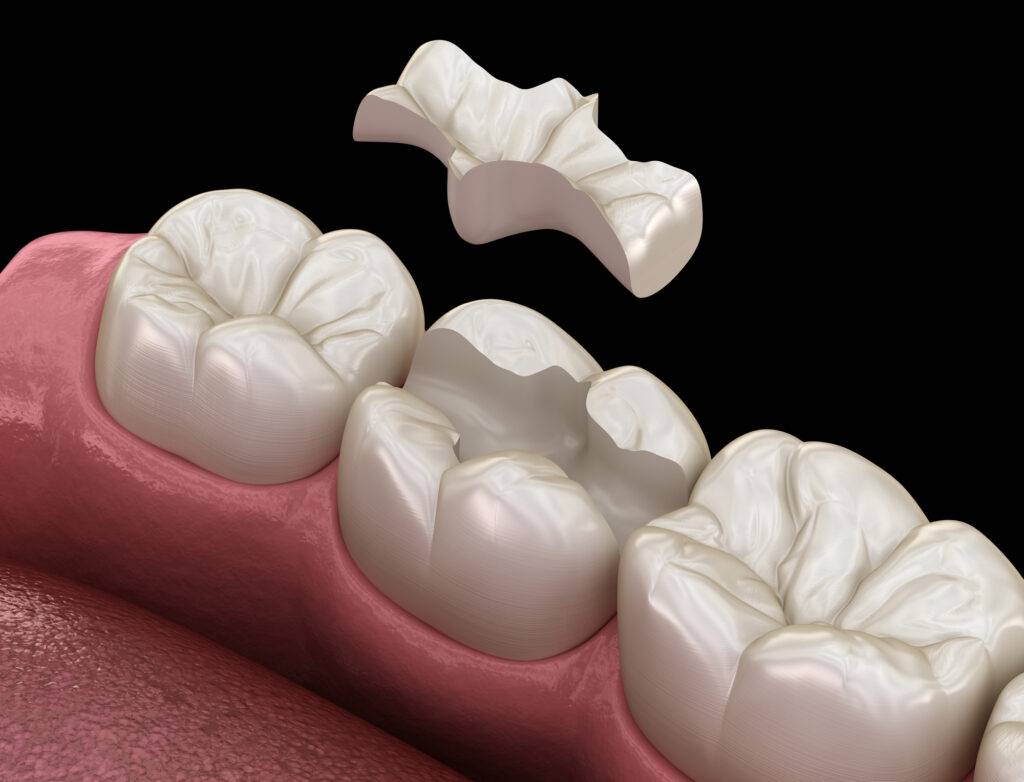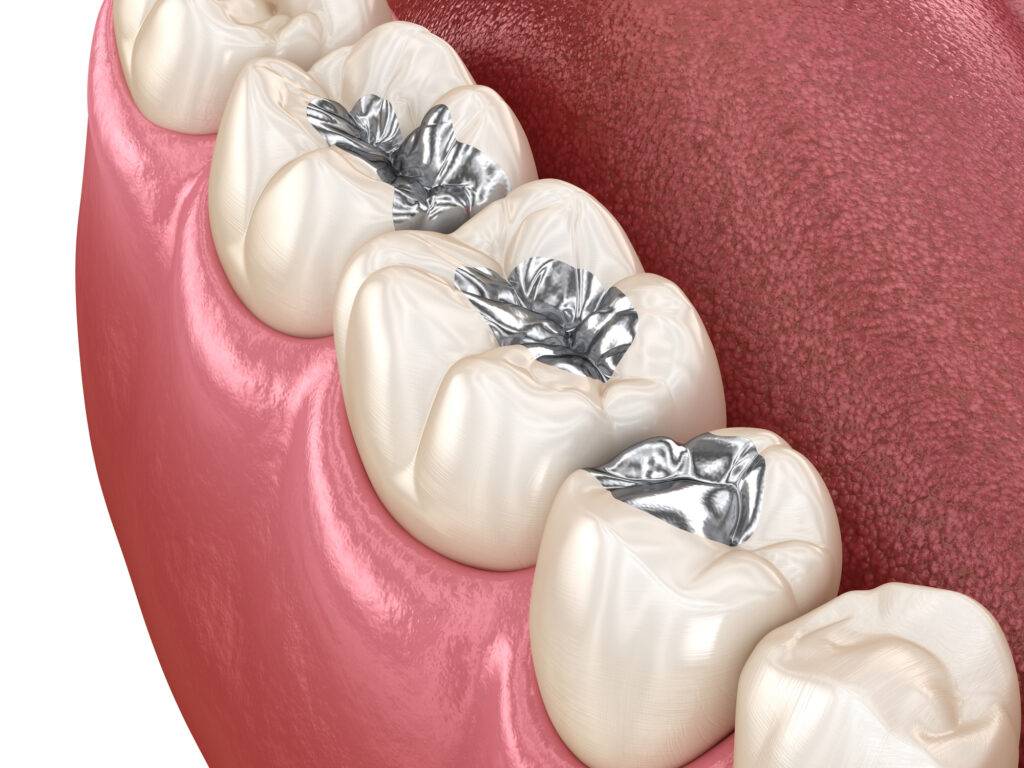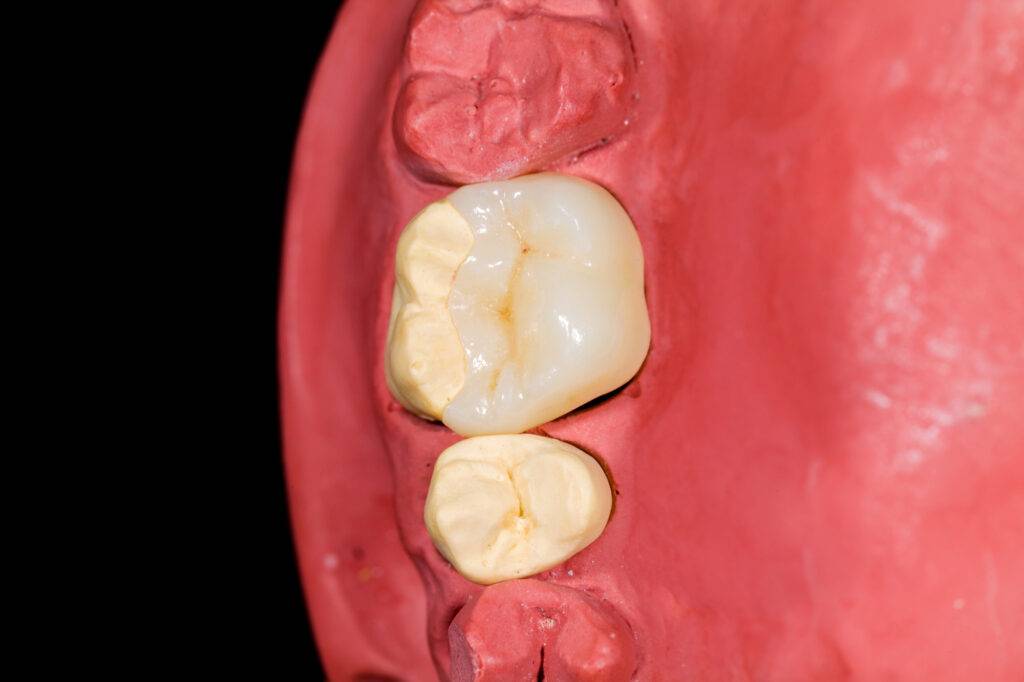In the US, 1 in 4 adults currently have at least one cavity, and 90% of adults over 20 have had at least one cavity during their lifetime. Tooth decay can seriously damage your teeth and leave you wondering what tooth repair options you have.
Dental inlays and onlays are great solutions to fix areas of damage and decay in your teeth and are something you’ll need to consider. Your first step is to understand how they work and what types of damage they work best for.
In this guide, you’ll learn everything you need to know about inlays and Onlays and why they might be the option for you!
Overview of Inlays

A dental inlay is a type of filling molded to fit the central chewing surface of your tooth when it’s been damaged due to cavities or injury. Cavities at the center of your tooth vs. the outer points or cusps usually have more extensive decay.
Inlays are made of either composite or porcelain material. Your dentist will choose which material will work best for your situation.
When Do You Need Inlays?
Your dentist might recommend an inlay to repair damage to your tooth’s structure for situations such as:
- You have broken or decayed teeth that don’t affect the sides of your tooth
- The damage is too extensive for a traditional filling
- You don’t have enough damage for a dental crown
Procedure for Inlays
The procedure for a dental inlay is pretty straightforward. Your dentist will first numb the damaged area of your tooth with a local anesthetic.
They’ll then drill into the tooth to clean out the decay. Once this is complete, your dentist will make an impression or do a scan of your tooth to have the inlay made. Finally, your dentist will place the inlay on your tooth and set it with dental cement.
Inlays vs. Fillings

It’s important to remember that several factors determine whether inlays are the better option for you. Generally speaking, inlays are better for filling larger cavities and are more durable overall.
Metal amalgam or silver filings have been used to treat cavities for over 100 years. Composite fillings are newer but have become more popular for tooth fillings.
Both fillings are durable and long-lasting, but metal amalgam can expand and contract with temperature exposure. This can ultimately lead to the cracking of the tooth or filling over time.
Since inlays are molded to fit your teeth perfectly, they tend to last longer than traditional fillings. Inlays also protect your teeth and can last anywhere between 10 to 30 years with proper dental care.
A traditional filing may be an easier option if you have a small cavity. However, an inlay might be a better option if you have a larger cavity.
Overview of Onlays

Dental Onlays fit over the surface of your tooth. They can be made of composite, porcelain, gold, or resin. Onlays can also fix teeth that have damage from cavities or injuries.
Onlays are similar to inlays but differ in the amount of tooth they cover. Remember, inlays cover the center of your tooth, where Onlays go over the cusps.
You can think of Onlays as the middle ground between a filling or removing part of your tooth to get a crown. Onlays are similar to crowns, but they ultimately replace less of your tooth.
When Do You Need Onlays?
Your dentist might recommend onlays if the tooth’s cusp has damage that a filling cannot fix. Additionally, your dentist will recommend an Onlay if your tooth has a weak structure due to decay that may crack from a filling.
Finally, you can choose an Onlay over a crown to save more of your natural tooth structure.
Procedure for Onlays
Typically you’ll need two dental visits to fit and place dental onlays. First, your dentist will numb your tooth area with a local anesthetic to remove the damaged and decayed areas. Like dental inlays, your dentist will need to take an impression or scan of your tooth.
To protect your tooth until your Onlay is ready, you’ll typically wear a temporary Onlay. Once your Onlay is ready, your dentist will permanently attach it to your tooth.
Onlays vs. Crowns
Both onlays and crowns work well to restore damaged teeth. The difference is that onlays only repair the damage on the cusp of your teeth, while dental crowns can restore severely broken or worn down teeth.
You’ll need to have enough natural tooth structure to support an Onlay. A dental crown is a better option if your tooth has too much decay or cracking.
You’ll need to talk to an experienced dentist to find out which one would be better for you.
Benefits of Inlays and Onlays
There are also many benefits to getting inlays and onlays to consider. First, they increase the overall lifespan of your teeth by making them stronger and more durable.
Inlays and onlays can also replace old metal amalgam fillings and give your teeth a more natural appearance. This is because materials like porcelain are shade-matched to blend in with the rest of your teeth.
With veneers and crowns, you’ll need to have some of your natural tooth structure removed. While with inlays and onlays, your dentist will only remove the damaged parts of your tooth.
Finally, inlays and onlays are more cost-effective and often covered by dental insurance plans. This is because they’re not considered purely cosmetic since they treat tooth decay.
Talk to a Pasadena Dentist About Your Options
Now that you understand more about inlays and onlays, you’ll be better able to discuss these options with your dentist.
If you’re looking at Dentists in Pasadena, you won’t need to look any further than Green Street Dental. We offer general dentistry services and cosmetic dentistry services such as implants, inlays and onlays, and teeth whitening.
We can help you with all your dental care needs and are dedicated to providing you with high-quality dental care so you can have a confident and healthy smile.
Make sure you contact us today to book a consultation!



0 comments on “Inlays and Onlays: The Perfect Solution for Damaged Teeth”